-
Posts
7,405 -
Joined
-
Last visited
-
Days Won
148
Content Type
Profiles
Forums
Resource Library
Events
Gallery
Blogs
Store
Community Map
Posts posted by Noel
-
-
 Respect
RespectSuperb workmanship - Enjoy.
-
I've used a mix of Lenz Silver 21pin and Bachman 36-557 21pin in Murphy Models 141/181s. The low cost 36-557 performs remarkably well with MM141 crawling smoothly without any juddering.
-
Two queries:
1. Does TL mean lighting provided along the length or a coach rake by a power van with genie?
2. How were the 'steam heaters' fuelled (Diesel, Gas, Electric, etc)?
-
I'm fairly new myself to DCC, but as I understand it the number of pins is more of importance when using 'direct fitting' decoders (i.e. decoders that plug directly onto a circuit board in the loco or into a lead already fitted into the loco). If using bare wire decoders than I don't think the number of pins/wires matters too much if using basic four function decoders (i.e. loco drive plus a few lights). 21pin decoders seem to support more functions (i.e. lights, fire box flicker, simulated steam module, sound/speaker connections).
There are wiser and more experienced owls on here who I'm sure can give a much better explanation. I'm about to embark on a phased programme to install decoders in about 30 of my old locos, mainly LMS, GWR, BR (exLMS/exGWR) and a few LNER steam. None of these are DCC ready (i.e. don't have DCC sockets), so I will be fitting basic drive only or four function wire decoders in most of them, but I plan to use 8pin plugs and harnesses for ease during future maintenance and in case I ever need to change the decoders. I've bought a few test samples so far and have found some are better than others for slow speed running especially with older style motors. Some of the budget decoders don't seem to run locos as slow speeds as smoothly as others.
The recent Murphy Models GM locos I have collected take 21pin direct fitting decoders so no choice there as regards pins. So far I'm impressed with LokPilot 4, LokSound 4, Lenz Silver and surprisingly the Bachman 36-557 (rebadged Soundtrax). Have a few more yet to try.
-
You can also get a JMRI throttle app on android, just found it on the play store. You can also get a sprog and connect it to your laptop then you don't need a DCC controller.
Hi Dave. Yes Engine Driver JMRI Throttle seems to do the same job on android phones and tablets.
Happy days wireless cabs walking around layouts.

Ideally such cab apps should be able to interface directly with decent DCC control systems using WIFI (i.e. instead of needing a PC/Laptop/Mac in between), but turkeys don't vote for christmas, so I guess DCC system vendors don't want us all to use our phones instead of buying their propriertory cabs. The WiThrottle app has saved me from having to buy two additional cabs. And WiThrottle has a more direct interface to higher value functions than most cabs I've seen (i.e. no need for silly shift buttons). This is useful for sound equipped decoders with many useful functions above FN 0-9 (e.g: notching GM motors up/down).
Engine Driver - Android App

-
hi all - had a ball at the expo..great location,.some fantastic layouts, great tips from the boyos at the displays -and I have to say the friendliest expo I have ever been at! full praise to the organisers and I hope and pray it will return next year to the same venue! pics to follow asap.........!
Some photos would be nice. Unfortunately I couldn't make it to the show. Sounds great.


-
Excellent work, more pictures please
Hear hear - inspirational. Just an awesome layout. I love the scenic work.
-
Here are some basic steps to use iPhone and/or iPad as a low cost wireless CAB control on most popular DCC systems. You can control up to TWO locos from an iPhone, and FOUR from an iPad.
Prerequisites:
- Laptop or PC must be on the same WIFI network as the iPhone/iPad
- JMRI must support your vendors DCC controller - most are supported (check JMRI website)
- You will need either and RS232 serial cable or a USB cable to connect your DCC controller to your laptop.
- Install the free WiThrottleLite app on an iPhone or iPad (later if you like it you can buy the full version for €8.99)
1. Install JMRI on Laptop, PC or Mac. Connect to RS232 or USB port.
2. Configure JMRI Connectivity to your vendors DCC Control Unit

3. Check JMRI is communicating with your DCC controller. Look for green ONLINE message in the bottom of the JMRI window.
4. Add one or more of your LOCOs to JMRIs Loco Roster List. Choose Decoder, enter loco address and a description

5. Try driving one of your LOCOs using the JMRI Throttle. This will act as a test to ensure JMRI can interface with your DCC controller.

6. Start JMRI's WiThrottle Server. Use Actions menu. This will listen for iPhones or iPads on the same WIFI network running WiThrottle app

7. Start WiThrottle App and choose a loco to control by using SET. WiThrottle will display your Loco inventory from the JMRI Loco Roster List. Swipe to Throttle page and drive!

8. JMRI can label each locos decoder functions in plain english. The labels are transferred to the iPhone/iPad apps

9. WiThrottle App with custom function labels. (Murphy 071 Sound Decoder)

Have fun. The best thing about this is you can use old phones as free hand held wireless cab controls, or pay only €9 for the full WiThrottle app.
iPad/WiThrottle controlling TWO locos

- Laptop or PC must be on the same WIFI network as the iPhone/iPad
-
Noel,
DO I understand that the WiThrottle app will interface with any system that's compatible with JMRI?
I use a Gaugemaster/MRC Prodigy Advance 2 and MRC have just opened up their software to be JMRI compatible.
As I understand it YES, but I think you will need to download the latest version of JMRI which is still in beta test, but available for download (i.e. 3.9) and supports MRC. I just checked the latest production version of JMRI Decoder Pro that I am running on my Mac and PC, both of which are running version 3.8, but MRC/Gaugemaster is NOT listed as a manufacturer in the 'Manufacturer' section of the system preferences in 3.8. Suggest you download the free 3.9 version and check to see if MRC is listed in Preferences.
Cheers
Noel
Steps:
- Install JMRI on PC/Laptop
- Connect PC/Laptop to DCC system (ie RS232 or USB depending on system)
- Configure 'System Manufacturer' section of JMRI preferences, and 'System Connection' (i.e. COM Port, etc). Check the bottom of the main JMRI window to see that your DCC controller is listed as 'ONLINE' in green. (i.e. RS232 or USB cable is working and correctly wired/configured).
- Add a LOCO to the JMRI Roster list (i.e. choose decoder type and enter loco address)
- Test JMRI is talking to your DCC system by trying to drive the loco using JMRI's Throttle Window.
- Ensure your laptop is connected to your domestic WIFI router.
- Under 'Actions' click 'Start WiThrottle Server'. This will listen over WIFI for any devices running WiThrottle.
- Start WiThrottle on smartphone/tablet that is connected to the SAME wifi network. After a short while it should see your JMRI system, and your JMRI WiThrottle Server window should see your phone or tablet.
- Choose a LOCO on the phone, SET, and run it. For MRC there may be an earlier step to tell JMRI which MRC cab it is.

- Install JMRI on PC/Laptop
-
Hi Folks
What are popular methods of weathering?
I've read an excellent piece on here using black/leather spray mix with lots of thinners being wiped off with cloth/cotton buds then allowed to dry (ie the wet method). Are there other methods? I've heard of a dry powder application which presumably is then sprayed with some sort of Matt lacquer to seal and fix it, is that another? Pros & cons, etc. thanks.
Noel
-
Ok after my moaning about jurassic software interfaces for decoder programming, I hooked up our NCE Pro Cab DCC controller to a laptop running JMRI, which in turn could be controlled by the WiThrottle app on my iPhone and iPad over WIFI. (too many acronyms
 )
)And surprise surprise it all worked!

Now I have an almost zero cost walk around wireless cab that can operated as a single or dual throttle control. OK the daft laptop has to be running, but it has spared me the cost of buying more cabs and especially wireless ones. An added bonus is I did not have to buy one single extra bit of hardware. Out of the box the NCE controller has an RS232 port so no need for USB converter as I used my retired old Win7 Laptop.
WiThrottle iPad app running two locos - WIFI interface to Laptop running JMRI connected to NCE via RS232 cable.

WiThrottle iPhone app - low cost wireless hand held cab

Now if there was a half decent iPad app for decoder programming . . .?
JMRI is not bad for advanced decoder programming, especially for speed curves, function mapping and quick access to sound settings. It takes a while to import an entire decoders settings from the program/test track. JMRI didn't have library settings for the popular Bachmann 36-557 decoder (ie. rebadged SoundTrax tsunami). Lots to learn, lots to experiment with.
BUT in the end - I now have two wireless cabs for only €9
-
There are a few dcc throttles that mimic prototypes but it's hard to beat the simplicity of driving a loco with your phone

Agree
Wireless hand held walk about for FREE with WiThrottleLite app or only €9 for full WiThrottle version. Costs a micro fraction of manufacturers wireless systems.
WiThrottle controlling NCE system using WIFI via JMRI on a Laptop

-
I think you hit the nail on the head there, Dave. I think it has to do with the older demographic of the US market. You've got a lot of old timers (no offence intended there!) who don't want to give up the feel of a throttle in their hand. Mention computer control and it's like a red rag to a bull!
Having watched some youtube videos the age demographics in usa modelling seems a factor alright.
-
Lovely sequence of photos. Thanks for posting.
-
Hi Noel, the American stuff has fallen way behind. It seems its a case of if it ain't broke don't fix it! The NCE powercab is a good example of this, the ESU system is one of the best out there in my opinion. The Roco Z21 system is very good and is still developing all the time. But if you by a decent 5 amp NCE or Gaugemaster for a little bit more you can buy the ESU Ecos.
Hi Dave.
Thanks for feedback, I very nearly did buy the Ecos but I didn't like the large size of the twin control console (i.e. not for hand held walk around use), but it did seem to tick nearly every box I could think of except for direct smartphone/tablet interfaces. Reading the technical specs and manuals it really did look the biz. In the end I went for the 5amp NCE Pro Cab as a compromise. There was a delay in shipping it, and I very nearly had a change of heart and changed the order to the Ecos, but glad I didn't for now. What put me off was the insane price of the additional touch screen cabs (android 'Mobile Control II'), which would be better off as wireless cabs via apps on a Samsung, HTC, etc or iPhone/iPad. The more I learn about DCC the more I realise that the heart of the system is the decoder used and really ergonomic cabs, the control unit being the least important component, as the decoders and cabs do the smart work. With the growth in sound it seems CABS, many of which have very similar button layouts need a fundamental redesign to accommodate direct one key access to 20 functions. As a software bod, I find some of the NCE cab screen interface rather bizarre (e.g: when displaying function status, no cab controls work until you exit that display). I'll continue the partial rewire, and installation of decoders over the next year or two, and then if a decent smartphone interfaced DCC system has appeared on the market I may put the NCE on ebay and update. It's a pity ESU didn't make the twin cab smaller leaving the touch screen interface as an app on popular tablets (i.e. for system setup, decoder programming, routes, accessory control, etc). In my line of work I just have a low tolerance for poor software that is neither smart nor intuitive. Ah, everything is a compromise.

Cheers
Noel
-
I'm enjoying playing with and learning DCC which is an ongoing process. BUT I am mildly surprised how hideously dated and 'techie' decoder programming is in 2014. Who needs to know binary, or even decimal nowadays, surely by now all the mainstream DCC vendors would have as standard functionality with their basic systems, an elegant software interface to program any manufacturers decoder.
Just stick WIFI in the control box and then any Android or iOS mobile device or smartphone could be used to configure and backup decoders in plain english, not numerics. The interface is so mid 1990s. I know this can be done with a kludgy solutions using a laptop and software like JMRI, or vendor specific programmers, but heck DCC is supposed to be a standard, so surely a touch screen colour interface to smart software using vendor libraries should be useable to programme any vendors decoder without the need for a daft PC in the mix (i.e. programme on console or via smartphone/tablet)? I find it bizarre in 2014 that most folk have to put up with decoder programming on two for four line mono LCD screens one value at a time - its stone age. I know ESU have made a decent stab at it, but thats out of reach of many and smart software interface should be standard now we live in the smartphone era. Forcing consumers to buy proprietary programming accessory hardware is a very yesteryear business model. Mini-rant over!

-
Fabulous models. Please spare my ignorance but what was the protruding box on the sides used for? Is it a vent, stove chimney, window, or other, and if windows for what purpose?
-
its another batch of the Dapol CIE 1950's coachs ...one in the black and tan and a break in the green livery:dancing:
Do you know if such would be scale repo's of laminates or bredins or other?

-
Thanks guys that's great. I have the manual and reading it through again tonight. Will play with the decoder on Friday.
-
Don't forget to open the holes in the roof for the horns and antennas while the body is off. They are marked on the inside......

Do you mean drill a hole for sound purposes?

-
DCC installed with some provisional wiring. Basically I've feed it though my old DC block section panels and switch every section to ON, which in effect provides about 16 drop feeds. Got three DCC ready locos chipped, now to tackle some older steam locos with direct wiring. I went with NCE Pro Cab in the end. Will need to spend may a winters evening learning more about DCC, NCE and programming and fitting decoders. Anyway got three locos running simultaneously, two on upper level and one on the middle level.
141 hauling empty coal wagons, 073 inbound

-
For the benefit of any other 141/181 body removal virgins

I see there is a speaker rack in there already.
-
OK no NCE Pro Cab users around for past 24hr, but . . .
I've been wondering if I'm going about this the wrong way, should I be looking at reprogramming the decoder to remap functions above 9 (i.e. 10-19) to lower FN values (e.g. 5-9). I'm trying to get the MM 071 sound chip FN 18 & 19 on direct key access so need to map them to say FN 8 & 9?
PS: does anybody know if the MM 071 sound decoder (i.e. LokSound V4.0) can be programmed to dim the cab light. It's a bit stark.
-
Thanks
Not sure if this is what LJM was referring to but from memory when the 201s were first introduced their automatic 'fly by wire' control software was not ideally suited to the Irish climate and in the first year had reliablity issues. On some routes they may have even reverted back to 071s until the 201 software was changed. I remember chatting to a driver who explained the issue was highlighted by leaves on the rails, or severe ice, allowing wheel spin. I hope my memory is not failing me but I think he told me when this happened the 201s early fly by wire software sensed this and stopped drive to the wheels, whereas on the older GMs drivers had more manual control and knew how to keep the locos running. Resulting in false 'breakdown' events during the first year. If there are any CIE/IE drivers on here from that mid 1990s era they will be able to give a more accurate explanation of what the early 201 reliability problems were. LJM, is this what you were alluding to? There were some other mechanical reliability issues that had to be snagged out in early years.
.png.c363cdf5c3fb7955cd92a55eb6dbbae0.png)


 Respect
Respect


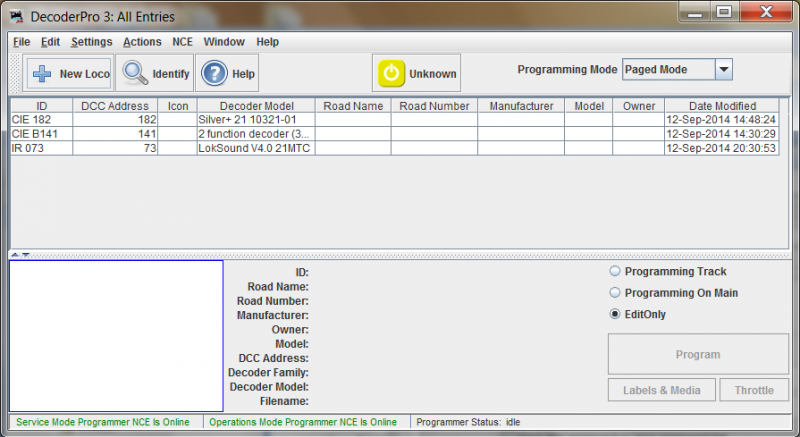
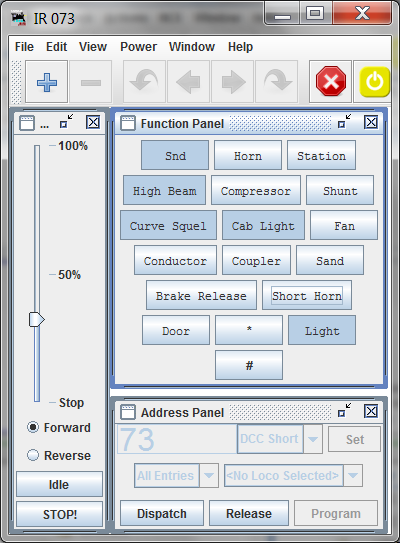
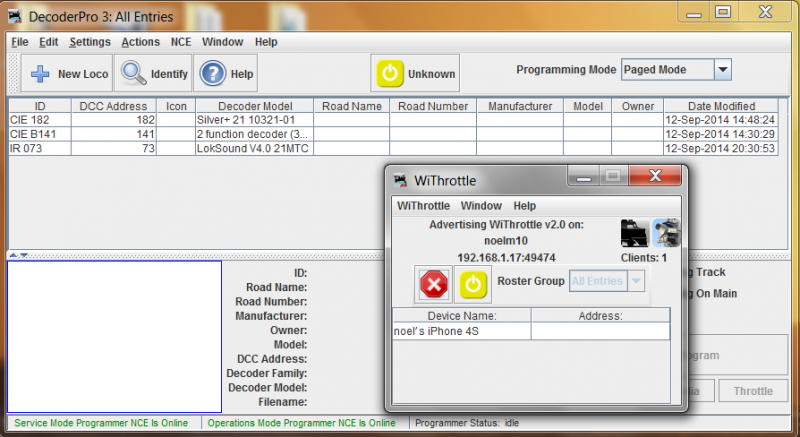

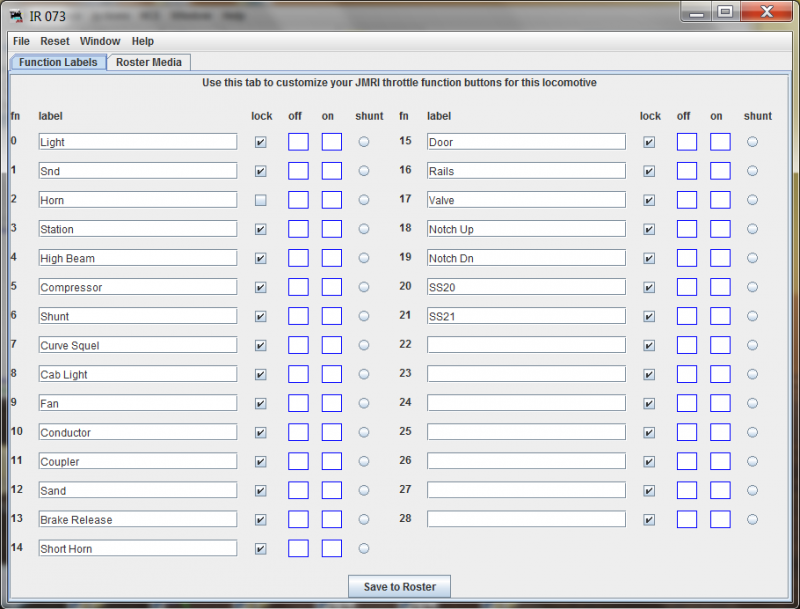
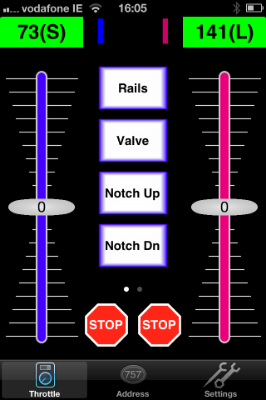
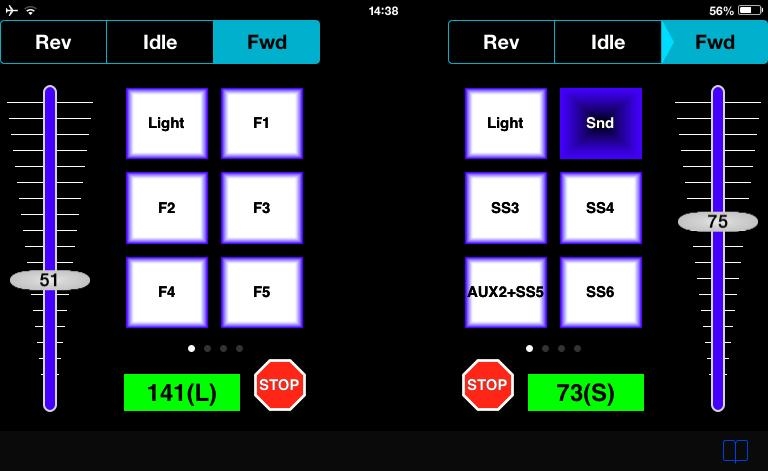
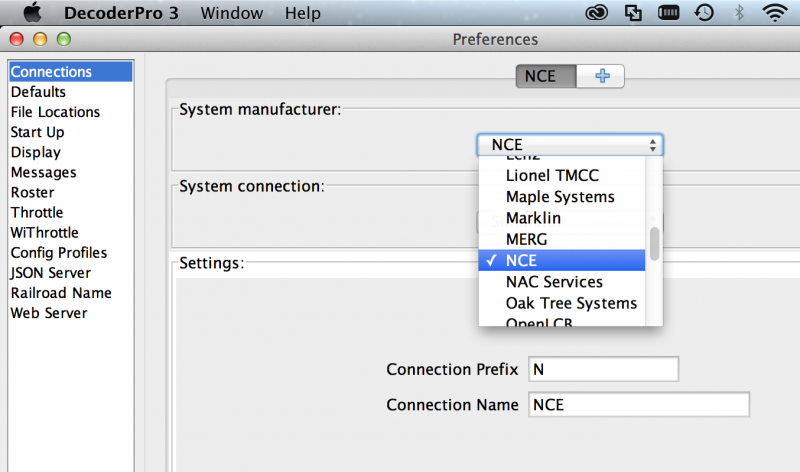
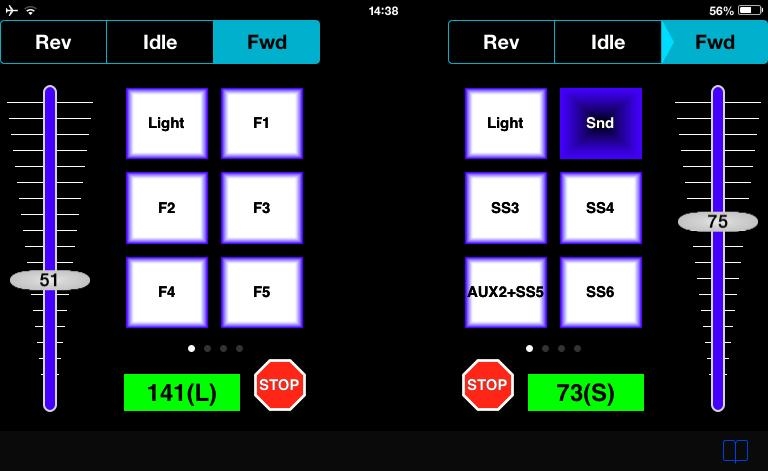
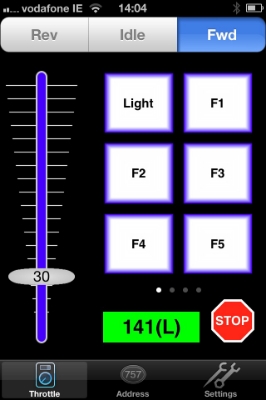

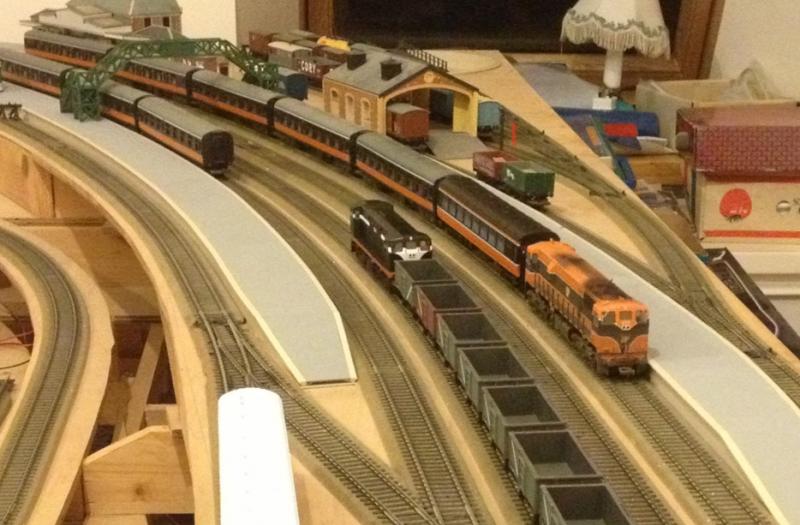

DCC decoder chips
in DCC, Electrics and Electronics
Posted · Edited by Noel
Agree about Lenz. The Bachman 36-557 is actually a rebadged SoundTrax M1. It does seem worth a few extra bob to put a reasonable decoder in older locos rather than budget decoders. They seem to have better features for driving old motors smoothly. Spent a few hours this evening dismantling the first batch of my older steam locos for a pre DCC service and DC test run. Also allows me to evaluate what space is available to fit decoders, pick ups, etc. It doesn't seem worth fitting DCC to a loco unless there are pickups on at least 3 axles, and preferably 4 axles. Some of my old BR diesels have pickups on only two axels on one bogie!